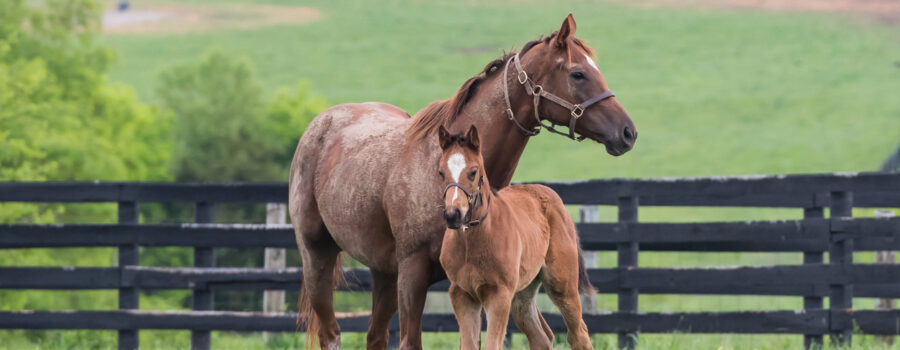When it comes to breeding successful racehorses, it’s not just about pairing the fastest sires and dams. If you want to see consistent, improved performance from your foals, you need a strategic approach that considers complementary traits, dam lines, and the broader family potential.
Here’s a three-step framework that I’ve used successfully over the years to help breeders achieve higher-performing foals. Follow these steps, and you’ll see a measurable difference in your breeding outcomes.
Step 1: Evaluate the Dam’s Offspring Performance
The first step is to look closely at the dam’s offspring.
How have her foals performed in the past? Performance history isn’t just a random assortment of results; it tells a story about the traits she passes on reliably.
For example, if her foals consistently show strong early speed, you’re likely working with a dam that passes on agility and quick acceleration.
Here’s what to do next: Gather detailed records of her previous foals, focusing on race stats, training feedback, and any consistent traits that trainers or handlers notice.
Are they physically durable? Do they excel at certain distances?
This history will give you a reliable predictor of future offspring potential and help you understand the dam’s strengths. You’re looking for patterns—traits that appear repeatedly in her foals, not outliers.
Step 2: Match Complementary Traits Between Sire and Dam
A common pitfall in breeding is focusing solely on race records when choosing a sire.
But pairing two race-winning horses doesn’t automatically create a superior foal. Instead, focus on matching traits that will strengthen each parent’s genetic influence.
For instance, if the dam consistently passes on strong stamina but lacks acceleration, choose a sire known for speed and agility to balance the pairing.
When matching traits, consider specific physical attributes, mental toughness, and even temperament. If you have a dam that is high-strung, a calm, focused sire could balance her nervous energy and produce a foal that is not only fast but manageable in training.
Another example: if your dam line is known for endurance but has less explosive sprinting ability, aim to complement with a sire that has shown impressive times in short races. By focusing on complementary, not identical, strengths, you increase the likelihood of well-rounded, adaptable foals.
Step 3: Analyze the Female Family Line for Traits in Consistency
Dam lines, or the broader maternal family tree, play a powerful role in breeding outcomes.
A strong dam line often means reliability in key traits like durability, soundness, and even temperament over multiple generations. While it’s tempting to look only at the dam and sire, analyzing the female family can reveal traits that consistently show up across generations.
Here’s a simple way to start: research the dam’s mother (the foal’s granddam) and any known traits that her foals and grandfoals exhibit. If you see a history of high-performing horses across several generations, you have a valuable genetic asset.
Look for patterns of strength, speed, and resilience that might not be apparent from the dam alone but have persisted through the female line. Prioritizing mares from strong dam lines often means you’re investing in genetic reliability—a huge advantage in breeding.
Bringing It All Together
Once you have a good grasp of the dam’s past offspring, understand complementary traits, and are clear on the female family line, you’re ready to make a more informed breeding decision.
This three-step framework isn’t about guessing or hoping; it’s about strategically using data to predict outcomes.
Let’s bring it all together in a practical example. Say you have a dam that consistently produces foals with excellent stamina and a calm temperament.
After analyzing her previous offspring and her dam line, you notice a pattern of strong long-distance runners. To maximize this potential, choose a sire known for his quick start and sprinting power but with a proven endurance streak.
This combination could yield a foal with the stamina for long races and the initial burst to stay competitive early on.
Why This Approach Works
Breeding is as much about predicting future performance as it is about avoiding costly missteps.
The traditional approach, which often involves simply pairing two race-winning horses, misses the nuances that this three-step method captures. By evaluating dam lines, matching complementary traits, and factoring in family consistency, you’re stacking the odds in your favor.
This isn’t theory; it’s practical breeding. Over the years, breeders who follow these steps consistently report better foal performance, improved training adaptability, and stronger auction prices.
Every dam, sire, and family line has strengths and weaknesses, but with the right pairings, you create foals that are more likely to succeed in the field, track, or auction ring.
Key Takeaways and Template for Your Next Breeding Decision
To get started with this framework in your breeding program, use this template as a quick reference:
- Evaluate Dam’s Past Offspring: Write down notable traits from her previous foals, noting both racing and training characteristics.
- Identify Complementary Traits with Potential Sires: List the dam’s strengths and weaknesses, and look for a sire that will add traits the dam lacks, rather than duplicating her strengths.
- Analyze the Dam Line for Consistency: Research the dam’s family history for recurring traits over generations that add value to her profile.
Each time you plan a breeding decision, come back to this template. It keeps you grounded in data, helps you make a thorough analysis, and increases the probability of successful, high-performing foals.
Final Thoughts on Traits for Breeding Smarter
Investing in breeding is a commitment, but it’s also a science and a long-term strategy.
Relying solely on race records, or choosing sires and dams without a structured plan, is like throwing darts in the dark. With this framework, you’re making calculated, educated decisions.
Breeding isn’t about quick wins; it’s about creating long-term quality. So, evaluate carefully, match wisely, and trust in the consistency of strong family lines.
The best breeders aren’t those who chase trends but those who understand the nuances of genetics and pairing. Follow these steps, and you’ll soon find yourself with a stable of foals that not only perform but carry the traits you value most for generations to come.







Recent Comments